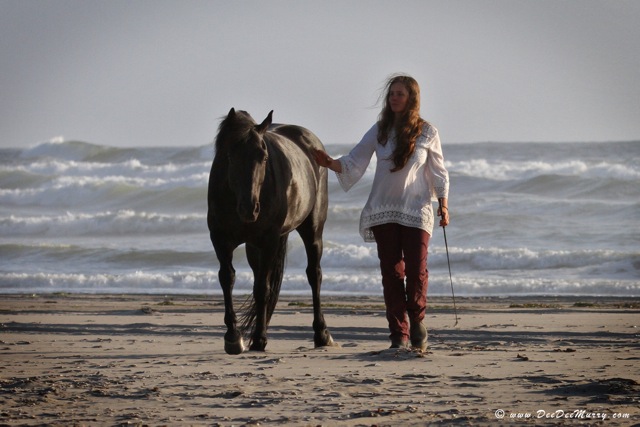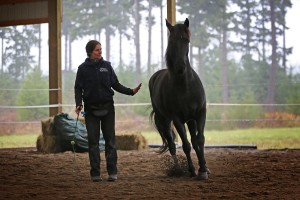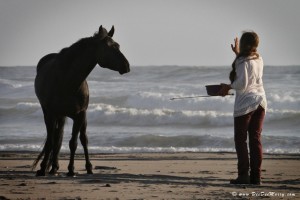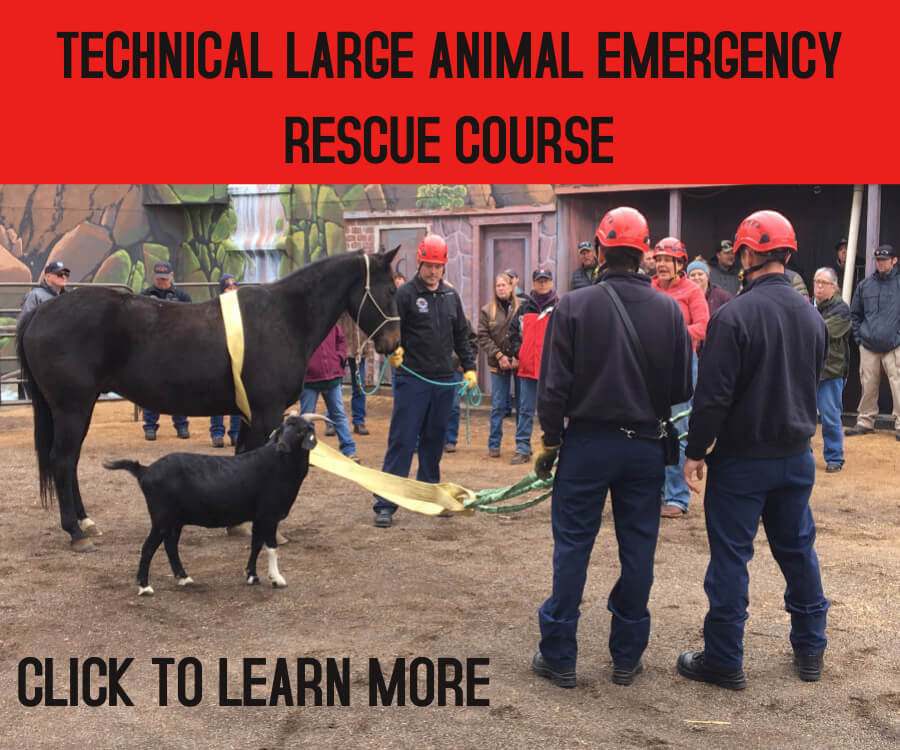A Proven Way to Develop Confidence and Trust with Your Horse
by Donna Kelleher, DVM
Liberty horse training has profoundly changed the way I interact with my horses. It all started five years ago when I got bucked off by my newest rescued horse, Tino. A small Morgan cross with plenty of attitude, he threw me so violently, my arm and leg contorted like a pretzel. You’d think Tino would have loved me; after all I rescued him from the mud, all skin and bones and parasites. That day I faced the reality of our poor relationship, choking on it like my mouthful of arena sand.
In a final attempt to rescue our damaged human-horse bond, I traveled to California to train with Robin Gates in the Carolyn Resnick method of liberty training. The end result was astonishing. The horse that once bucked me off and pinned his ears at the sight of me now trotted up to the gate, ears forward and engaged. That is what liberty horse training has the possibility of achieving with your horse—a sense of wonder and fun and a willingness to be in “seeking” mode. This is what Temple Grandin explores in her popular book, Animals Make Us Human. She described a rather profound notion that animals cannot simultaneously feel fear and enter into seeking mode (a state of being engaged and eager to learn) at the same time.
animals cannot simultaneously feel fear and enter into seeking mode (a state of being engaged and eager to learn) at the same time.
The principles of liberty training are not just for horses. They can be applied to any relationship because to be a fair leader you must be strong, but also soft and flexible according to the situation.
Basic Principles
 The horse needs to feel safe around you and this is critical to him. For instance, when putting your horse into a scary situation such as a new trail ride, your commitment and responsibility as leader is that he is safer with you than without you. There are a few techniques for creating a strong bond and the first one starts with the human simply meandering, without expectations, in your horse’s paddock or field. What does your horse do? Does he run away or stay close? Does he say hello and engage with you? What if you stand in his paddock holding the halter or the bridle? Does he run in the other direction? In this way you can test how much trust your horse has in you.
The horse needs to feel safe around you and this is critical to him. For instance, when putting your horse into a scary situation such as a new trail ride, your commitment and responsibility as leader is that he is safer with you than without you. There are a few techniques for creating a strong bond and the first one starts with the human simply meandering, without expectations, in your horse’s paddock or field. What does your horse do? Does he run away or stay close? Does he say hello and engage with you? What if you stand in his paddock holding the halter or the bridle? Does he run in the other direction? In this way you can test how much trust your horse has in you.
Every time we interact with horses we have an agenda and it includes a time schedule to keep and a checklist for our relationship. A basic principle of liberty training is the horse can get away from you and always have access to hay or grass. You control the special food like grain, carrots, or treats. Liberty horse training is unique because it is the only type of training in which the horse can reject your request. This may seem offensive, but in a wild herd it makes perfect sense and pretty much governs herd dynamics. Horses choose their close buddies and their arch enemies based on subtle body language and respect for spatial relationships.
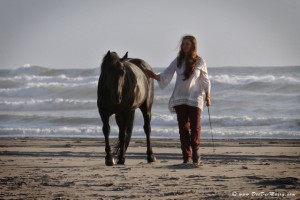 For training purposes with our horses, we can ask for something and because we control the resources the horse might say yes. He can retreat to another end of the paddock and get no apples or trot up to his human to receive a piece of something special and it’s his choice. The favorite place for Robin Gates to do this training is a big pasture, not a small corral or round pen. Across a large grassy field, Tino will now lift his head, ears forward, and turn his attention to me. He is looking to connect. If I call him over, he will leave his equine companions and approach me, connecting to my right side and we can walk or trot together in any direction, our shoulders connected in an equine-human partnership that feels like a dance. Even in a five-acre field, my horses will walk beside me with only a scratch of the withers to reward them.
For training purposes with our horses, we can ask for something and because we control the resources the horse might say yes. He can retreat to another end of the paddock and get no apples or trot up to his human to receive a piece of something special and it’s his choice. The favorite place for Robin Gates to do this training is a big pasture, not a small corral or round pen. Across a large grassy field, Tino will now lift his head, ears forward, and turn his attention to me. He is looking to connect. If I call him over, he will leave his equine companions and approach me, connecting to my right side and we can walk or trot together in any direction, our shoulders connected in an equine-human partnership that feels like a dance. Even in a five-acre field, my horses will walk beside me with only a scratch of the withers to reward them.
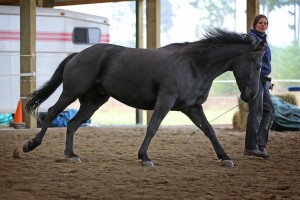 In the horse world, the dynamics of movement are very important (“who moves who”). The leader moves the herd and communicates when it is safe to eat or drink and when there is a potential predator. Thus, liberty work gives the trainer a wide range of spatial relationships to explore with the horse. For instance, we can move a frightened horse from behind, gently pushing his energy into different directions and giving him the feeling he is safer because the leader literally has his back. We can also move the horse from left to right or right to left and also point from the front to send him in either direction. It is powerful for the horse neurologically to get these signals because he is thinking as he would in the herd. It is also the opposite of conventional horse training where this natural way of communicating is suppressed.
In the horse world, the dynamics of movement are very important (“who moves who”). The leader moves the herd and communicates when it is safe to eat or drink and when there is a potential predator. Thus, liberty work gives the trainer a wide range of spatial relationships to explore with the horse. For instance, we can move a frightened horse from behind, gently pushing his energy into different directions and giving him the feeling he is safer because the leader literally has his back. We can also move the horse from left to right or right to left and also point from the front to send him in either direction. It is powerful for the horse neurologically to get these signals because he is thinking as he would in the herd. It is also the opposite of conventional horse training where this natural way of communicating is suppressed.
Liberty training has many practical uses for all types of horses. Not only that, it is just plain fun. Because it can create big energy in a safe way, even European dressage trainers are using it to start horses. Transform your relationship with your horse: have fun, create a stronger bond and build trust naturally using liberty work.
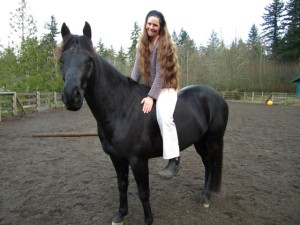 Bio Donna Kelleher is a British Horse Society’s Assistant Instructor who got inspired to learn liberty, clicker and trick training. She is also a holistic veterinarian with an emphasis on herbal therapies and acupuncture. To learn more visit www.freespirithorsetraining.com
Bio Donna Kelleher is a British Horse Society’s Assistant Instructor who got inspired to learn liberty, clicker and trick training. She is also a holistic veterinarian with an emphasis on herbal therapies and acupuncture. To learn more visit www.freespirithorsetraining.com
Published in August 2015 Issue

The Northwest Horse Source is an independently owned and operated print and online magazine for horse owners and enthusiasts of all breeds and disciplines in the Pacific Northwest. Our contemporary editorial columns are predominantly written by experts in the region, covering the care, training, keeping and enjoyment of horses, with an eye to the specific concerns in our region.


